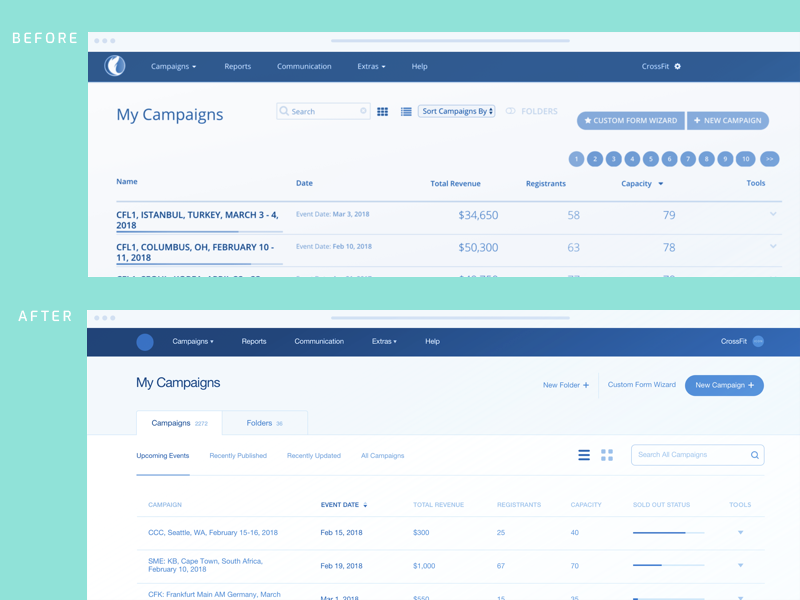UX is not a before/after image. The process uou don't expect
March 12, 2021
Elena Venieri

Sooner or later I’ll open my Instagram profile, where I’ll talk about UX and so every now and then I find myself thinking about what kind of posts I want to write, how to set them up visually, what stories to tell. And since when the mind races, then the hands go after it too, I end up scrolling through the Instagram profiles of other designers for inspiration. I had thought that an interesting type of post could be to show some redesign projects done, putting in parallel what was before and how it became after.
But then the question came to me whether this is really User Experience. Sure you can see the aesthetic differences between before and after, but my main concern is that you lose the core of the user experience, which is context.

Showing before/after examples taken out of context is a mere exercise in rhetoric. If the intent is to present effective solutions, this is not the way to do it.
The reason is that there is no one correct answer that works for every “scenario”. True UX must take into account multiple variables, all the stakeholders, and all the goals you want to achieve with the project. It’s a path whose stages aim to align all these factors until you get to the final solution. It goes without saying that each process is unique.
With a before/after image, what passes of all this?
Between the before and after, there is an infinite number of questions that need to be answered.
We can divide them into three basic phases.

1. Analyse
The first phase, it’s about framing what our users are, what problems need to be solved, and what our reference brand is, with its goals and values. We must not forget that user needs and business KPI go on the same level.
At this point, we have to dig deep to corroborate with data the hypotheses we formulated in the first phase. This is a delicate phase in which we go to understand and comprehend all the nuances to be considered about the users we have defined.
We can do this with different techniques, and the results of the research will help us to ground the project. Some questions that come to mind:
- What are the user’s expectations of the product? How can they influence it?
- What are their wants and needs? Are they simply browsing and therefore passive users or are they looking for specific information to make a decision? How do they try to choose a product?
- What are the borderline and typical cases?
- What are the devices they use? Smartphone, pc, tv, augmented reality?
2. Design
This is the phase where we gather everything we’ve learned in the previous phase and use it to identify all the design opportunities. This is where the ideas will really start to take shape. There is never just one at this stage, but this is where they will be refined, some will be discarded and some brought forward until there is only one left: the concept.
Finally, you move on to making the concept concrete. Initially, sketches are drawn and wireframes are continued, until mockups and the final prototype are created. It’s not a linear phase because thanks to the prototypes we can let the user test the product and understand if we hit the target, if the experience we imagined is pleasant, functional and resolving. It is an iterative phase in which the process can be repeated several times until the final prototype fully satisfies the objectives set.
3. Achieve
If the testing phase has given us enough reassurance about the goodness of the solution found, we can proceed to implement the finished product. It’s not the end of a product implementation, but it is the end of the UX process, the one that leads us to take the “before/after” picture.